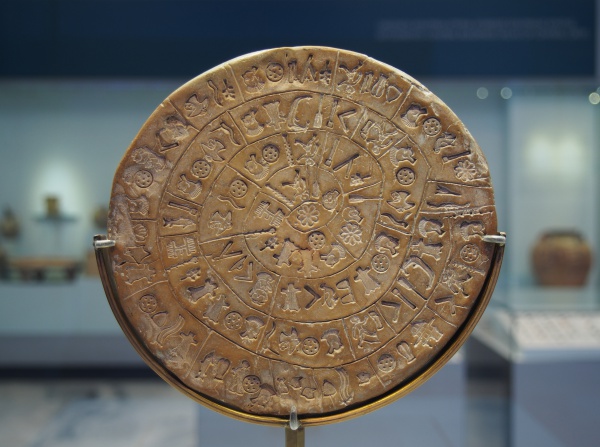Facts About Phaistos Disc
The Phaistos Disc is an unparalleled artifact, discovered in 1908 at the ancient Minoan palace of Phaistos on Crete. Crafted from fired clay, this captivating piece of history measures approximately 15 cm in diameter and features a spiral of stamped symbols on both sides. Despite over a century of intensive study, the disc’s purpose and origins remain subjects of fervent scholarly debate.
Unearthed in a basement chamber of an underground "temple depository" the Phaistos Disc is regarded as authentic by most archaeologists, although a handful of skeptics question its legitimacy.
The disc is inscribed with 241 tokens composed of 45 distinct signs, believed to have been produced by pressing hieroglyphic "seals" into the clay. Numerous scholars have attempted to decipher these symbols, proposing theories that suggest it could represent a script similar to a syllabary, alphabet, or logography. Experts date the disc to the Middle or Late Minoan Bronze Age, approximately between 1850 B.C. and 1600 B.C.
The inscription on the disc has ignited considerable debate and spawned numerous interpretations. Some scholars believe it represents various ancient languages, such as Ionic Greek, Mycenaean Greek, Hittite, or Luwian. Others advance non-linguistic explanations, positing that it could be a logographic script, an astronomical document, a gameboard, or even a calendar.
The symbols on the Phaistos Disc have been compared to other ancient scripts, including Linear A, Anatolian hieroglyphs, and Egyptian hieroglyphs. In the modern era, these characters have been encoded in Unicode, facilitating their digital representation.

 Turkey
Turkey